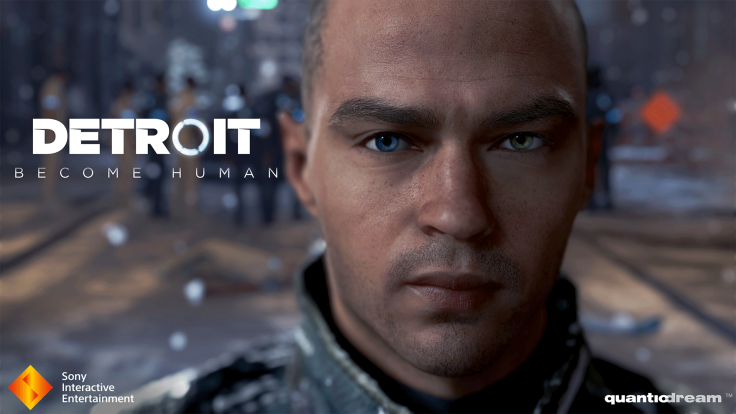Detroit: Become Human is not your typical E3 showcase game. Developed by Quantic Dream, the studio behind Heavy Rain and Beyond Two Souls, it's a game driven by narrative and player choice. It takes place in a world where androids have become almost human, and in their descent through the uncanny valley they occasionally develop emotions or independent spirits, and become labeled as “deviants.” These defective androids can run amok, as seen in this gripping trailer released during E3 2016:
The Detroit: Become Human demo at E3 2017 lets players go through that very scene, looking for context clues that could help defuse the situation. In this hands-on I controlled Connor, one of three protagonists in the Detroit: Become Human story. Connor is himself an android, albeit an android trained by the police department to be a crisis negotiator/android hunter. In this scene he’s talking to a suicidal android who sits perched on the edge of a roof, clutching a young girl and holding a gun to her head. It’s a tense situation, and Connor’s arrival on the scene does little to assuage the girl’s mother who screams while being dragged away “why didn’t you send a real person?”
Your task as Connor is to first investigate the apartment. Fans of Quantic Dream’s other work will know this style of gameplay well, but newcomers expecting more action might be a bit put off. Make no mistake, Detroit: Become Human is full of tension and drama and excitement, but not at the hands of twitchy gunfire battles or brawling street fights. It’s all about the mood and the moment, and even though my hands on lasted about 10 minutes I found myself engrossed in the characters. The stakes seemed real, the dialogue choices and investigative decisions mattered. That’s no small feat on a busy show floor that is the antithesis of an immersion-friendly environment.
So what do you do as you investigate? Mostly, the mechanic centered around scanning the room for objects of interest and then interacting with those objects to gain information. These could range from the exit wounds on a victim’s body (the rogue android killed several people on his way outside) or something as innocuous as a family portrait.
What really engaged me was the way you investigated things. Instead of hitting the same button over and over to interact with things. Detroit: Become Human prompts you with a variety of control commands. You might have to hit X or L1 or rotate an analog stick one way or another. The point is the scheme works at keeping you from getting bored. I would compare it to the slower Telltale games where it feels like all you do is hit the same button for an hour straight.
Information gathering is tracked by way of a completion bar that gives a percentage for the probable success rate for resolving the situation. Notice I did not say peacefully. Here, the end goal is to keep the girl safe so when confronting the rogue android, Daniel, I chose dialogue options that were comforting and reassuring. I told a noisy helicopter to back off, I went unarmed onto the roof and I approached with slow, deliberate steps. In the end, I convinced Daniel he was a busted android in need of help, and that as soon as he let the girl go we could fix his problem together. He believed me and released the girl.
Then the sniper opened fire.
Daniel’s last words to me were “you lied.” But the mission was a success and I walked away unscathed. I stuck around to watch some endings other players got to see and there are a wide range of possibilities. I got hooked on just one of the stories in Detroit: Become Human . I can’t wait until the game’s release (TBD 2018) until I can hear them all.


















